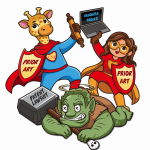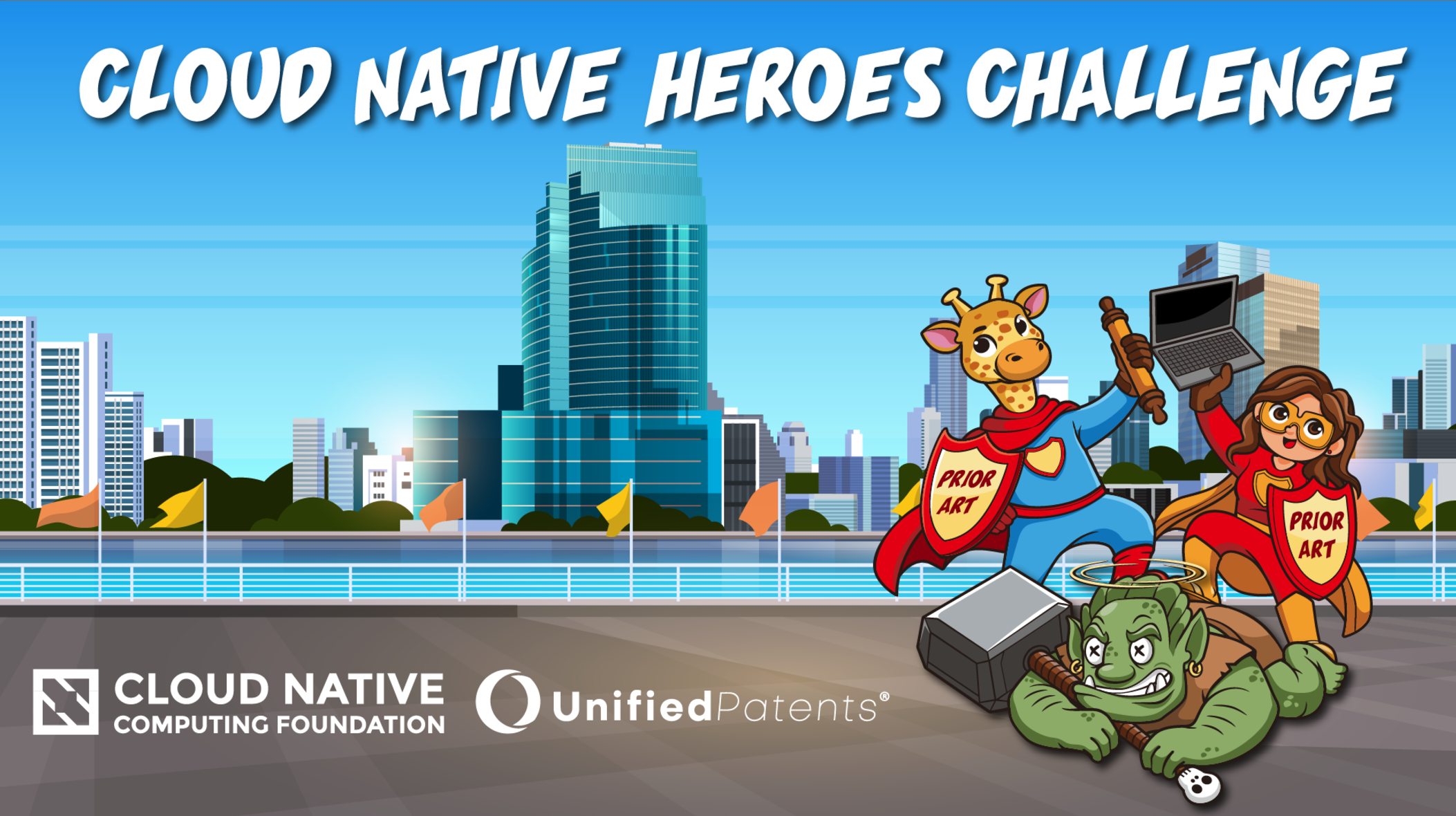Patent troll-busting: CNCF launches Cloud-Native Heroes Challenge
We’re all holding out for a hero, right?
Especially in the world of open source cloud-native software application development and data science i.e. we need leaders, mavericks and people willing to break new ground in order to “create the next Twitter” (never has that expression been more apropos) and it is often those willing to really think differently that help create new communities and perhaps even workplace methodologies.
The Cloud Native Computing Foundation (CNCF) isn’t specifically trying to create the next social media phenomenon (but presumably wouldn’t complain if it did), instead it is running a series of crowdsourced “prior art” contests in which cloud-native developers can earn “swag and prizes” by helping the technology industry to defeat patent trolls.
Cloud Native Heroes Challenge
The Cloud Native Heroes Challenge means all entrants who submit an entry that conforms to the contest rules will receive a free “Cloud Native Hero” t-shirt (remember, that’s just a garment of clothing at this level) that can be picked up at any future KubeCon+CloudNativeCon. The entrant who submits the winning entry will also receive a $3,000 cash prize.
“In our inaugural contest, we are seeking information that can be used to invalidate Claim 1 from US Patent US-11695823-B1, which has been asserted by Edge Networking Systems LLC, a patent troll, against adopters of Kubernetes,” states the CNCF.
What is a patent troll?
We can define a patent troll as a company that obtains the rights to one or more patents in order to profit by means of licensing or litigation, rather than by producing its own goods or services.
According to Investopedia, “While the practice of patent trolling is not illegal, a company that acts as a patent troll files patent claims without any intention of ever developing a product or service. The end result is bad faith infringement threats and licensing demands that require companies to spend a significant amount of money to settle these claims without any addition to the public good. A patent troll may also be called a patent shark, dealer, marketer, or pirate. A patent troll operation may be called a patent assertion company, entity, or a non-manufacturing patentee.
The relevant language of the patent is noted below:
A system comprising: a programmable network device adopted to host a plurality of network device applications; a programmable cloud device adapted to host a plurality of cloud applications, wherein the plurality of network device applications and the plurality of cloud applications are in secure communication with each other to form distributed applications; and wherein the plurality of network device applications and plurality of cloud applications device form unified capabilities enabling a plurality of upper layer application programming interfaces (APIs) to program the plurality of network device applications and plurality of cloud applications independent of network device hardware and cloud device hardware.”
How can developers help?
 Developers are asked whether they are aware of any publicly available materials (other than materials already listed in the “known references” tab of the contest information page) demonstrating that know-how regarding the invention described above already existed prior to June 13, 2013 (the priority date of the patent), which they can submit that evidence as “prior art” for this contest.
Developers are asked whether they are aware of any publicly available materials (other than materials already listed in the “known references” tab of the contest information page) demonstrating that know-how regarding the invention described above already existed prior to June 13, 2013 (the priority date of the patent), which they can submit that evidence as “prior art” for this contest.
What is prior art?
The legal term prior art refers to technical know-how that predated the patent application – so it is something that can help blow patent troll’s case open as they seek to sit on what they think is an original innovation that is typically held back from the market. The CNCF says that prior art can be used to “invalidate or weaken a troll’s patent” by demonstrating that the patented invention already existed and wasn’t “new” when the application for a patent was filed.
Examples of materials that can be provided as prior art include:
- Any open source documentation, including release notes.
- Articles, books and other publications.
- Recordings of presentations at technology conferences.
- Product manuals or descriptions
- Standards and specification documents.
- Any other publicly available documentation (in English in this case) that existed prior to this particular patent being filed.
Materials already listed in the “known references” tab of the contest information page do not qualify and cannot be submitted in this contest.
The t-shirt prize in this particular initiative probably doesn’t fully equate to the size of the patent troll problem across the IT industry at large, but its slightly convivial nature here does perhaps help popularise the positive effect that community-driven investigation and information-sharing can have in the fight against occurrences like this.
Kubecon + CloudNativeCon keynote
The Cloud Native Heroes Challenge was showcased as the opening keynote session introduction at this year’s Kubecon + CloudNativeCon North America keynote in Salt Lake City, Utah.
In opening remarks made by executive director Priyanka Sharma, the CNCF lead told us that, “Today, cloud-native is the dominant force in infrastructure, because of the people who build it. Our job is now to protect our innovation – and crucially that is from patent trolls, together we will shake them off with the force of musk oxen.”
Joanna Lee, VP of legal and strategic programs at CNCF took to the keynote stage to help validate Sharma’s analogy by explaining that musk oxen are known for their ability to band together and form an impenetrable collective barrier against predators, so the community relevance analogy is clear here. Lee manages strategic programs that are designed to support the health, growth and sustainability of open source ecosystems, while also overseeing legal and policy.
With some 9200 attendees in this year’s conference, quite a number of attendees are logically attending the event for the first time… and so introductory speakers did point out that every development team is at a different point on its cloud-native journey. That being said, that’s actually a positive i.e. because of their different maturity with these tools, cloud-native developers may come into contact with elements of prior art at different stages of the software application development lifecycle.
An endemic part of growth
“As open source projects grow – and we see developments like governments stepping in, in order to apply regulations on open source as significant recognition of this growth – these projects tend to attract attention, said Chris Aniszczyk, CTO, Linux Foundation (CNCF) speaking on the Kubecon + CloudNativeCon main stage with Sharma (via video link), Lee and exec director of the Linux Foundation Jim Zemlin
“The spectre of patent trolls is real… and these organisations don’t even use open source or Kubernetes, but these folks are starting to show up and impacting projects like Kubeflow, Argo and Kubernetes itself. While we as open source purists are all about commision-less innovation, we have the strength to combat these challenges,” said Aniszczyk.
The Linux Foundation’s Zemlin rounded out the whole discussion, first asking the crowd if they knew that the Linux Foundation was part of the Cloud Native Computing Foundation – which everybody pretty much did by a show of hands. He then played the bait-and-switch game by asking how many of the audience members knew what the role of a foundation actually was.
“A foundation should really be there to enforce safety and security,” said Zemlin, before then referring to the work the LF has already done with Unified Patents to look for non-practising entities and crush the assets that make a patent troll’s business succeed. The Linux Foundation has thus far had a 90% success rate in terms of invalidating patents from trolls that have surfaced attacking projects at every level.
We assume patent trolls live under the bridge, let’s hope we can flush them out.




